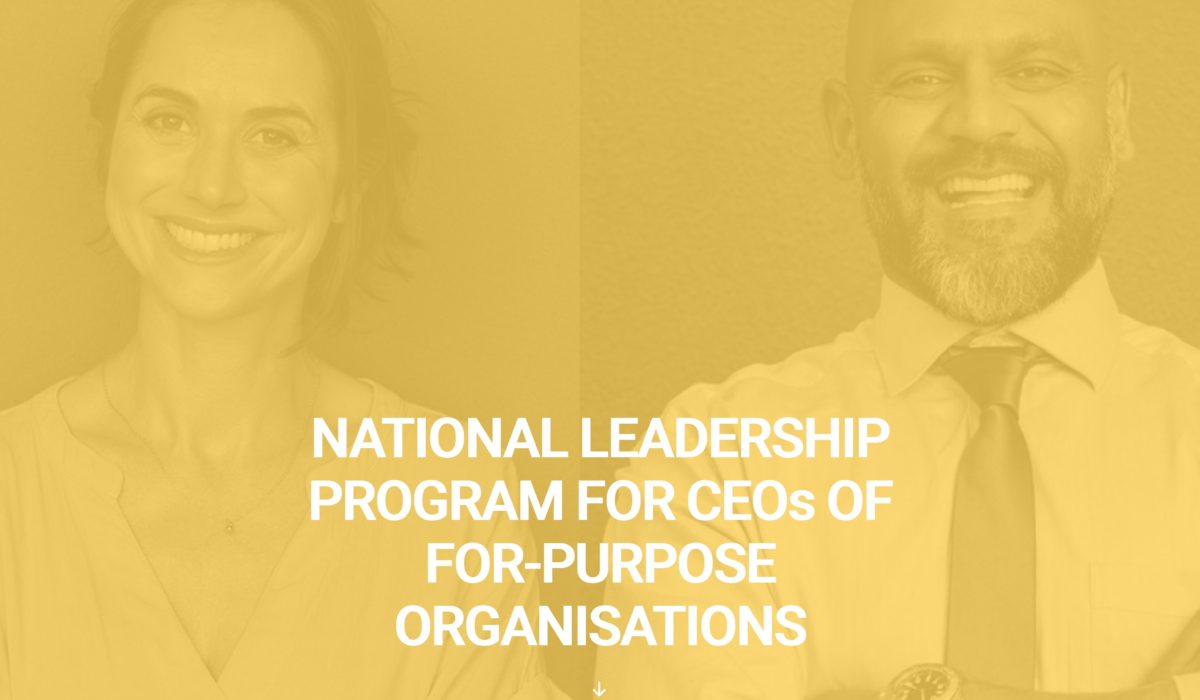Many of us have done leadership training for work, come back to the office and thought: “That was a huge waste of time”. Or returned with the best of intentions but realised, six months on, we never actually used any of skills we learned on the course. So, what makes leadership development programs effective?
Leadership
Women in leadership: Great progress in the NFP sector
It’s no secret that Australia still has a long way to go when it comes to gender equality in the workplace, especially when it comes to women in leadership. But how does the NFP sector stack up, compared with the rest of the economy?
4 myths about redundancies – and how to ease a difficult transition for your staff
“Trust is built in drops and lost in buckets.”
These are the words of Didier Elzinga, CEO of Melbourne-based software firm Culture Amp, reflecting on his experience of navigating a difficult transition. Making staff layoffs can be a shock for any company, but the impact can be more profound in highly collaborative environments like the company Elzinga had built.
Here, Elzinga dispels some of the myths surrounding staff layoffs and shares his learnings on managing change, dealing with fear and more.
The secret to retaining your employees? Focus on career advancement
Leaders overlook internal promotions at their peril. In a Pew Research survey, 63% of respondents who left jobs in 2021 cited a lack of advancement opportunities as a reason. And a 2022 study by consulting company McKinsey noted that a lack of career development and advancement was the most common reason given for quitting a job. With that in mind, here are three ways NFPs can use career development to retain employees for longer.
“Clarity, optimism, tenacity and persistence” – Leadership lessons from Lin Hatfield Dodds, CEO of The Benevolent Society
Lin Hatfield Dodds has spent her working life focused on people and communities who are vulnerable or disadvantaged, most recently leading over 1,500 staff as CEO of The Benevolent Society, Australia’s oldest charitable organisation dedicated to meeting the needs of vulnerable groups in society. In the lead-up to her keynote presentation at the 2023 Not-For-Profit People Conference, Lin spoke with us about her leadership journey and how she faces and overcomes challenges as the CEO of Australia’s oldest charity.
Eight ways NFP managers can vastly improve their communication skills
When it comes to communication, we all tend to think we’re pretty good at it.
Truth is, even those of us who are good communicators aren’t nearly as good as we think we are. This overestimation of our ability to communicate is magnified when interacting with people we spend the most time with.
These eight strategies will help you to overcome the communication bias that tends to hold us back, especially with those we manage or work closely with.
Need to manage change? Take this 100% free course in Adaptive Leadership for purpose-driven organisations
Have you ever struggled with a problem that will not go away, despite multiple attempts to solve it?
Adaptive leadership is a practice that helps a leader to engage members of an organisation to adapt to change, and it can help tackle problems which stubbornly persist or face unexpected resistance, despite seemingly obvious solutions.
How to build a culture of trust in your organisation
Employees who trust their organisation are more loyal, engaged, committed, and will advocate for their workplace – so how can leaders build an organisation-wide culture of trust?
If you’d like to build greater trust in your NFP’s workplace, here are 5 key ways trust can be built and improved.
A once-in-a-lifetime leadership opportunity for NFP CEOs
Good leadership is crucial for NFPs to succeed.
That’s why four major Australian foundations have announced a collaboration to create a 10-month, national capacity-building and leadership program for CEOs in Australian not-for-profit (NFP) organisations.
The Social Impact Leadership Australia program (SILA) is an evidence-based program specifically developed to meet the needs of Australian CEOs and build the capacity of their organisations directly and indirectly.
5 ways to tell if you’re an effective leader
People often debate what makes a great leader.
Recent research finds that leaders who can focus equally on results and people achieve the best results. That’s because they manage to do five things that few other leaders are able to accomplish.











